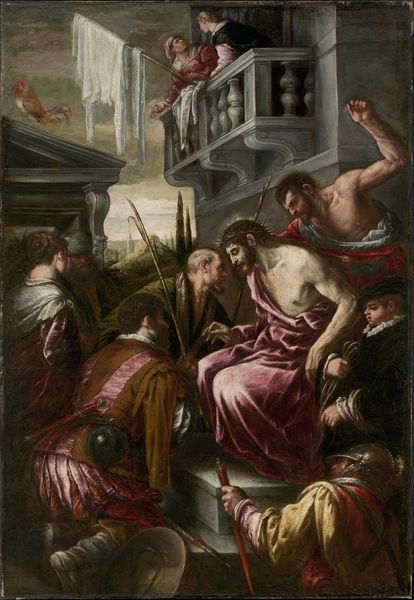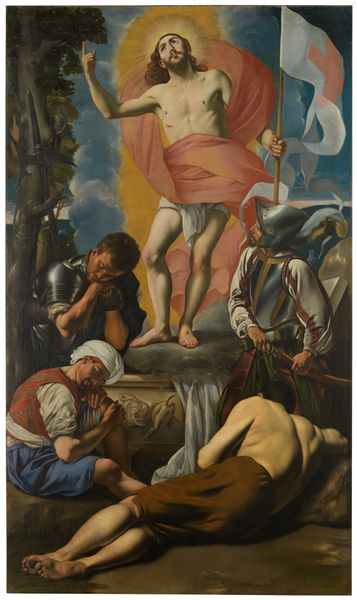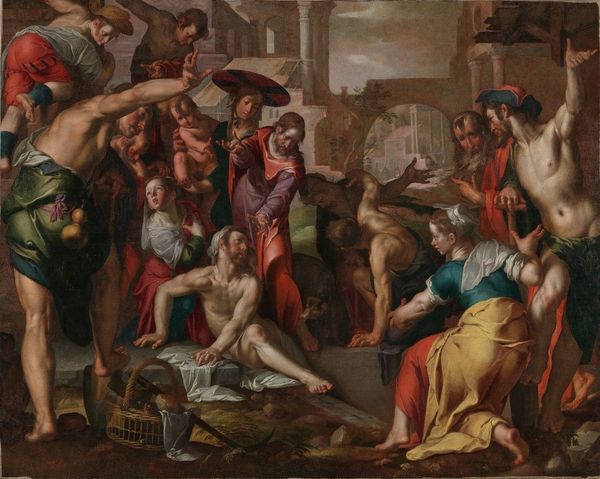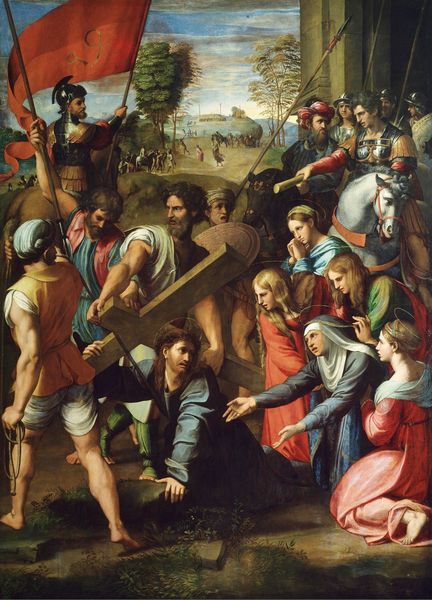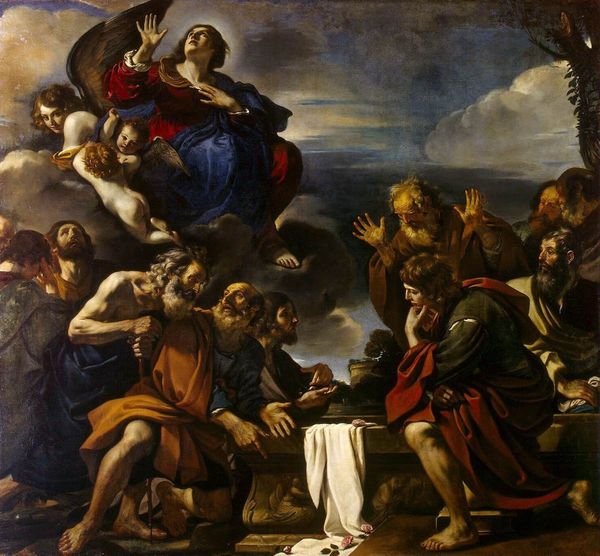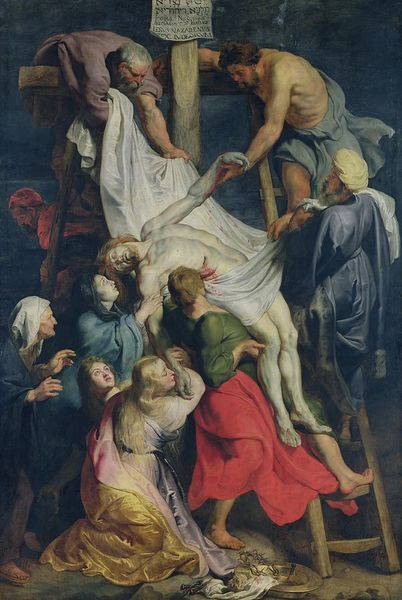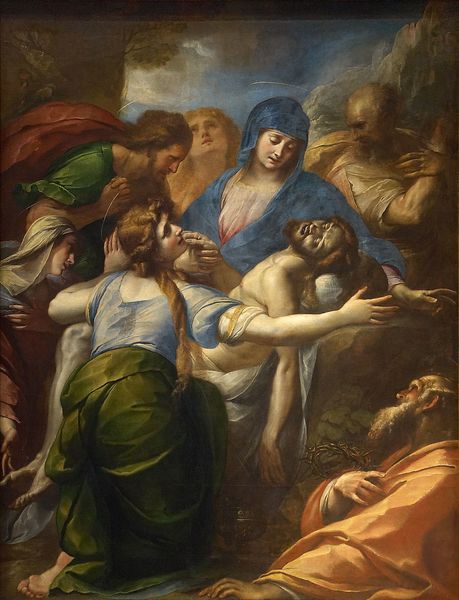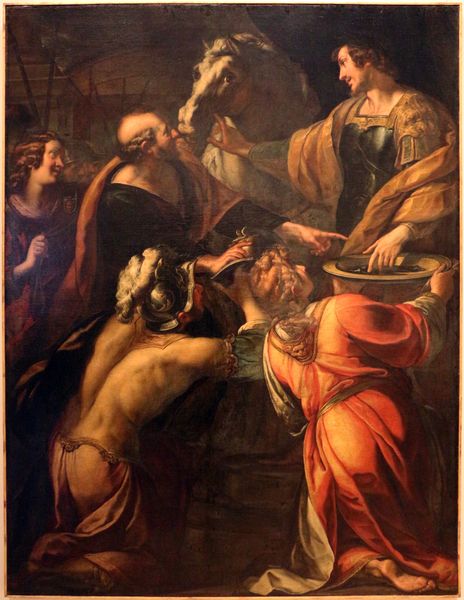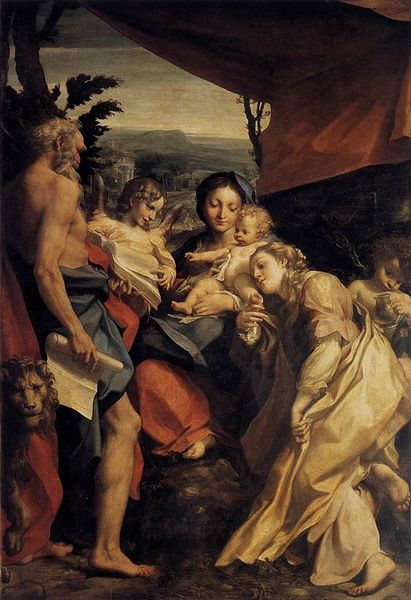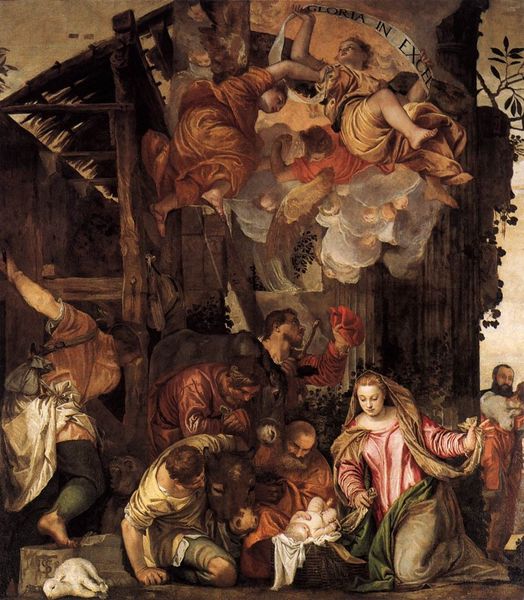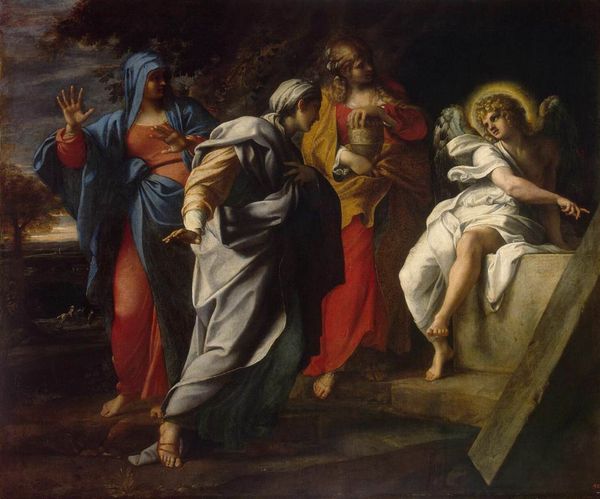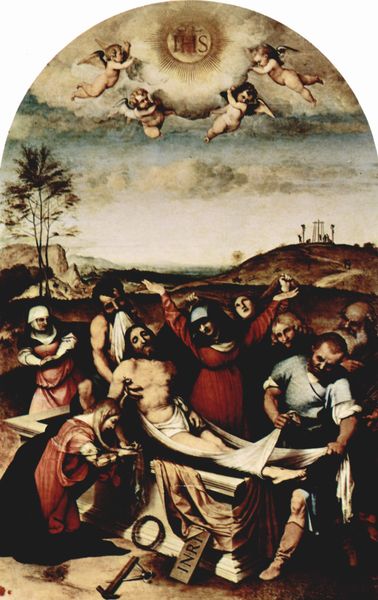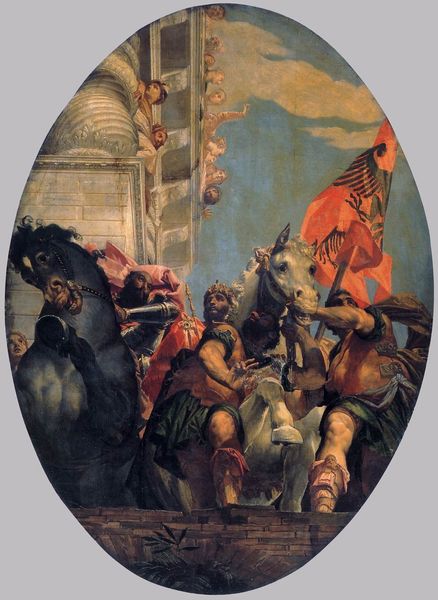
painting, oil-paint
#
portrait
#
narrative-art
#
painting
#
oil-paint
#
sculpture
#
landscape
#
mannerism
#
figuration
#
oil painting
#
history-painting
Dimensions: height 141.5 cm, width 99.1 cm, thickness 2.0 cm, depth 7 cm
Copyright: Rijks Museum: Open Domain
Curator: Immediately I’m drawn to the subdued palette, which almost renders the figures sculptural. It's an intriguing effect, wouldn't you say? Editor: It does have an earthy, tactile quality. Let’s provide some context. This painting is entitled “The Adoration of the Shepherds,” attributed to Anthonie Blocklandt, and it dates from sometime between 1560 and 1572. It’s currently housed here at the Rijksmuseum, rendered with oil paint. Curator: That timeframe places it firmly within the Mannerist style, and you certainly feel that exaggerated sense of form. Blocklandt seems so concerned with musculature that the spirituality of the moment almost recedes. There’s an artisan's hand visible in every fold and sinew! Editor: Precisely. It begs the question of labor – who were the craftsmen involved? Did Blocklandt have apprentices preparing his canvases? Grinding pigments? Considering the oil paint used and the techniques of layering involved, there's considerable material investment embedded in the scene. The narrative, of course, depicts the shepherds' visit to the newborn Christ, but I'm fascinated by the visible brushstrokes, the materiality that gives it such substance. Curator: It’s quite arresting actually—especially when you contrast it with the celestial light above. I can almost feel the weight of their earthly bodies juxtaposed against those weightless angels. What a statement on the dichotomy of our world, or perhaps a humble attempt at glorifying the work and worth of every single man! Editor: Or consider this: the canvas itself. The acquisition of such a large piece would have required capital. The commerce surrounding religious iconography at the time reflects social values, a material hunger for images both devotional and beautiful. I would love to research who the actual commissioner of the work was. Curator: Agreed. So much more than a quaint rendering, isn't it? It’s interesting how examining the context surrounding this painting reveals so much more than the mere scene depicted. Editor: It becomes an investigation into the very means of art's production, highlighting that the process is just as, if not more, profound than the product itself! The evidence lies right there on the canvas in the paint that makes up its forms and details.
Comments
No comments
Be the first to comment and join the conversation on the ultimate creative platform.
